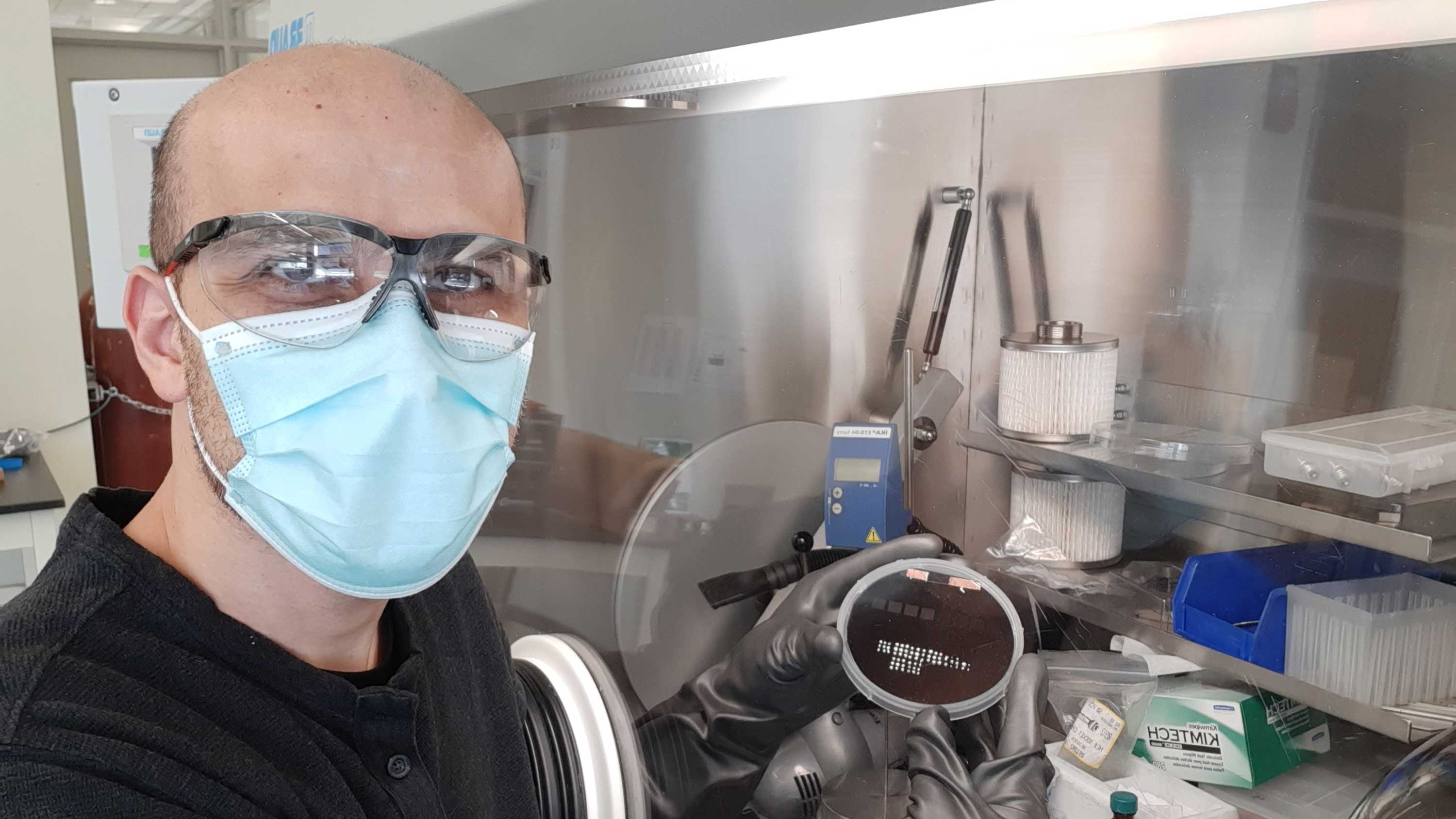An international research team led by University of Alberta chemists has identified a new method of creating high-quality memory devices, called memristors, for electronics using inexpensive and non-toxic liquid metals.
At the heart of the revolutionary technology are gallium and its alloys. Gallium is a non-toxic and lustrous metal that is better known for its use in soldering. But when paired with a silicon chip, this simple combination of materials results in a powerful memory device capable of stable, accurate information storage.
“It is remarkable that an inexpensive, non-toxic, liquid metal drop of gallium contacted with silicon produces such a high-quality memory device,” said project lead Mahmoud Almadhoun, a PhD candidate in the Faculty of Science. “We can now imagine printing gallium straight onto flexible substrates to make low-cost electronic memory devices at room temperature.”
“This is a rapidly growing area in the field of flexible hybrid electronics that looks to produce functional electronics, such as radio frequency identification tags to monitor goods, on any substrate using very inexpensive methods.”
Almadhoun noted that one factor that makes the discovery so significant is how easy these devices are to manufacture. Gallium-based liquid metals are flexible and easy to manipulate and then freeze into specific shapes—a much cheaper option than traditional silicon circuits, which must be prepared in high-temperature, vacuum-equipped processing facilities.
“This is a rapidly growing area in the field of flexible hybrid electronics that looks to produce functional electronics, such as radio frequency identification tags to monitor goods, on any substrate using very inexpensive methods,” he added.
“Mahmoud has spent three years of detailed mechanistic study to understand how these simple devices work so well,” said Almadhoun’s supervisor Jillian Buriak, professor in the Department of Chemistry and Canada Research Chair in Nanomaterials for Energy.
“What made it so challenging to study is that the on-and-off switching of these memory elements takes place smack dab at the interface between the silicon and the gallium—that interface is only 10 to 20 atoms thick. Literally thousands of experiments with slight differences in conditions enabled Mahmoud to determine that the reversible formation of tiny, nano-scale filaments of liquid metal is key to forming these memristor elements.”
Almadhoun is a student in the Alberta/Technical University of Munich International Graduate School for Hybrid Functional Materials (ATUMS),a graduate program funded in part by NSERC's Collaborative Research and Training Experience and designed to train the next generation of nanotech experts to be industry-ready upon graduation.
The work was conducted in collaboration with Maximilian Speckbacher from the Technical University of Munich and Marc Tornow from the Technical University of Munich, Ludwig-Maximilians-University and the Fraunhofer Research Institution for Microsystems and Solid State Technologies.
The study, “Bipolar Resistive Switching in Junctions of Gallium Oxide and p‐type Silicon,” was published in Nano Letters.
Great ideas change the world, but ideas need a push forward. At the University of Alberta, we know that push has never been more important as we do our part to rebuild Alberta and keep doors of opportunity open to all. We're making research discoveries. We’re cultivating entrepreneurs. And we’re giving our students the knowledge and skills they need to turn today's ideas into tomorrow's innovations. Read more stories about U of A innovators.
